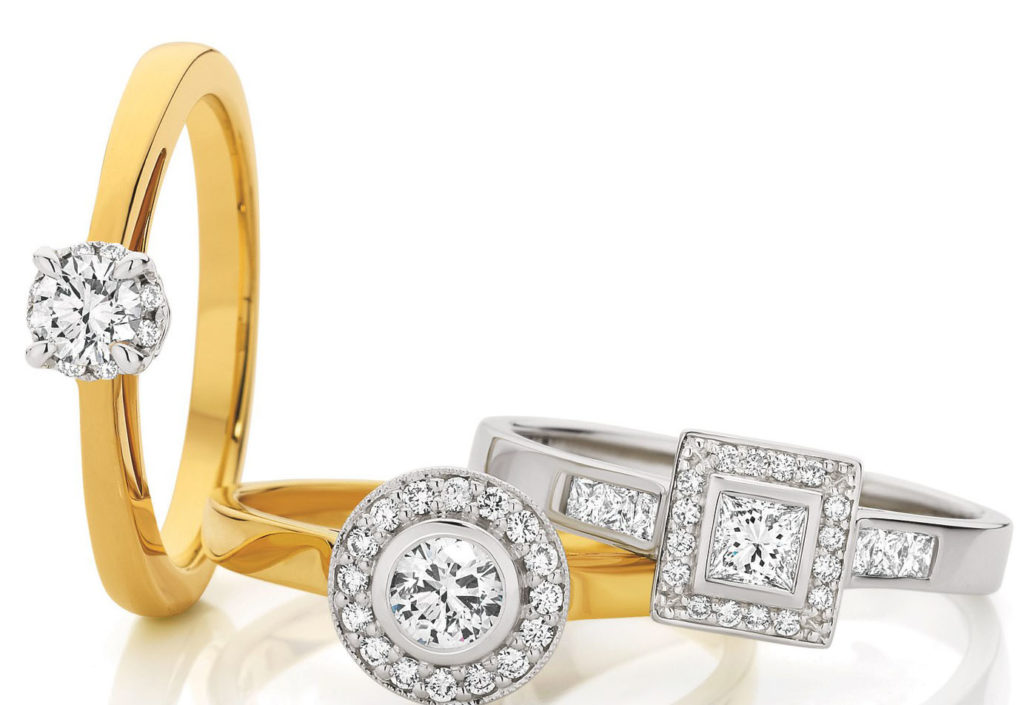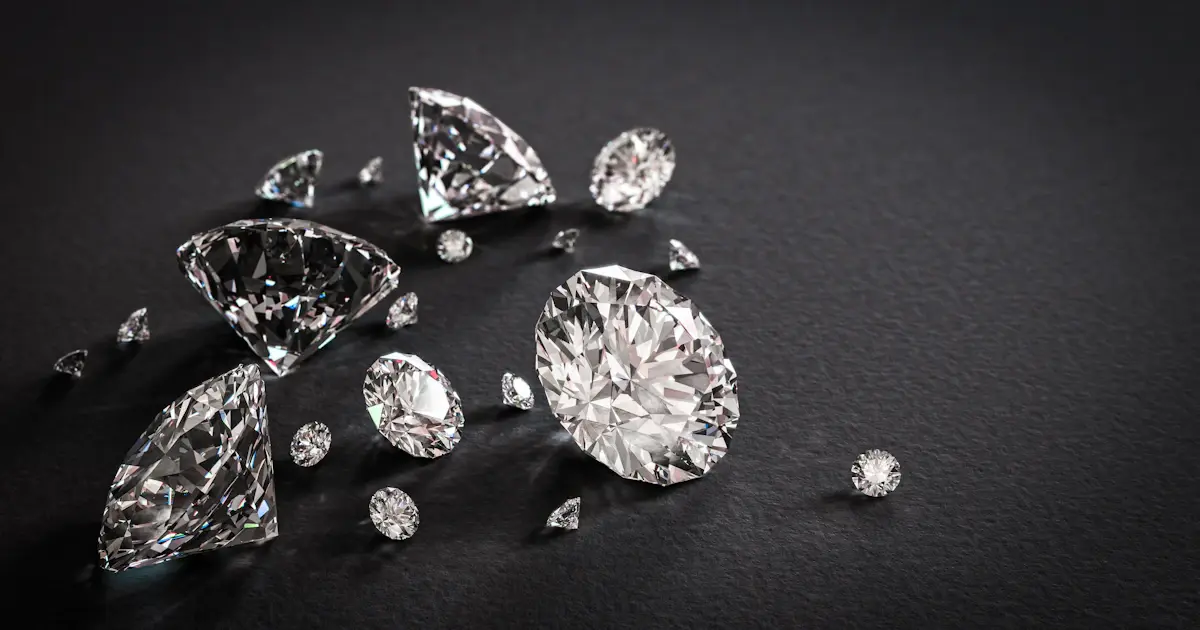Lab-grown diamonds have revolutionized the world of jewelry, offering an ethical, sustainable, and often more affordable alternative to natural diamonds. However, to truly appreciate these brilliant gems, it’s essential to understand the 4Cs lab diamonds: Cut, Color, Clarity, and Carat weight. Whether you’re buying a ring, necklace, or any other diamond jewelry, knowing how these 4Cs affect the quality and price of a diamond can help you make an informed decision.
What Are Lab-Grown Diamonds?
Lab-grown diamonds, also called man-made or synthetic diamonds, are diamonds created in a controlled laboratory environment that mimic the natural processes of diamond formation. Using advanced technology, scientists create diamonds that are virtually identical to natural diamonds in terms of their chemical composition, physical properties, and appearance.
Unlike mined diamonds, lab-grown diamonds are produced without environmental damage or human exploitation, making them an increasingly popular choice for consumers seeking an ethical and sustainable option.
The 4Cs of Lab-Grown Diamonds
1. Cut: The Most Important “C”
When it comes to both natural and lab-grown diamonds, cut is often regarded as the most important factor in determining a diamond’s overall beauty. The cut refers to how well the diamond has been shaped and faceted, which directly affects how it reflects light.
A well-cut diamond will sparkle and shine more than one with a poor cut, regardless of its other characteristics. For lab-grown diamonds, cutting is performed with the same precision and skill as natural diamonds, ensuring that the diamond’s brilliance is maximized.
There are several types of cuts for diamonds, including round, princess, emerald, and cushion, each offering a unique look. Round-cut diamonds are typically the most popular because they produce the most brilliance.
Key Factors in Diamond Cut Quality:
- Proportions: How well the facets are aligned and the overall symmetry of the diamond.
- Polish: The smoothness of the diamond’s surface.
- Symmetry: The alignment of the diamond’s facets.
2. Color: Finding the Perfect Hue
Color in diamonds is determined by how much yellow or brown tint is present. Lab-grown diamonds are graded on a similar scale as mined diamonds, ranging from D (colorless) to Z (light yellow or brown). The closer the diamond is to colorless, the more valuable and rare it is.
In man made diamonds, the color can be controlled during the manufacturing process, allowing for a more consistent appearance. Most buyers opt for diamonds in the D-H range, as these are considered near colorless and have a beautiful, clear look.
Color Grading Scale for Lab-Grown Diamonds:
- D-F: Colorless
- G-J: Near colorless
- K-M: Faint yellow
- N-Z: Light yellow to yellow
3. Clarity: The Purity of the Diamond
Clarity refers to the presence of internal or external imperfections called inclusions and blemishes. The fewer the inclusions, the higher the clarity grade and the more valuable the diamond.
Lab-grown diamonds are typically cleaner than natural diamonds because they are formed under controlled conditions where fewer impurities are introduced. This often results in diamonds with fewer visible imperfections.
Clarity Grading Scale for Lab-Grown Diamonds:
- Flawless (FL): No inclusions or blemishes visible under 10x magnification.
- Internally Flawless (IF): No inclusions, but minor surface blemishes may be present.
- Very, Very Slightly Included (VVSI): Inclusions are very difficult to detect under 10x magnification.
- Very Slightly Included (VSI): Inclusions are minor and difficult to detect with the naked eye.
- Slightly Included (SI): Inclusions are noticeable under 10x magnification but not easily visible to the naked eye.
- Included (I): Inclusions are visible to the naked eye and can affect the diamond’s appearance.
4. Carat Weight: Size Matters
Carat weight measures the size of the diamond, with one carat equaling 200 milligrams. Larger diamonds are generally more expensive, but carat weight should not be the sole factor in your decision-making process. A smaller diamond with a better cut, color, and clarity can be more valuable and beautiful than a larger diamond with lower qualities.
Lab-grown diamonds allow you to purchase larger stones at a fraction of the cost of a mined diamond, giving you more flexibility in choosing the right diamond for your budget.
How Carat Weight Affects Price:
- Larger diamonds are rarer and thus more expensive per carat.
- A higher carat weight often correlates with a larger diamond, but it’s important to consider the proportions of the diamond as well.
Why Choose Lab-Grown Diamonds?
Ethical and Sustainable
Lab-grown diamonds are a sustainable choice, as they do not require mining, which can be environmentally damaging and contribute to unethical labor practices. By opting for a lab-grown diamond, you are making a conscious decision to choose an eco-friendly and ethically sourced product.
Cost-Effective
Lab-grown diamonds are typically 20% to 40% more affordable than their mined counterparts. This price difference allows buyers to invest in higher-quality diamonds or even larger stones without exceeding their budget.
Identical to Natural Diamonds
Lab-grown diamonds have the same physical, chemical, and optical properties as mined diamonds. The only difference is their origin. To the naked eye, they are virtually indistinguishable from natural diamonds, offering the same brilliance and durability.
Conclusion
The 4Cs—cut, color, clarity, and carat weight—play an essential role in determining the quality and value of a diamond, whether it’s natural or lab-grown. By understanding these characteristics, you can make an informed choice that fits your preferences, budget, and values. Lab-grown diamonds not only provide a beautiful, sustainable, and ethical option but also offer superior quality, often at a more affordable price than natural diamonds.
When shopping for lab-grown diamonds, remember to look for reputable jewelers that provide transparent grading and certification to ensure you’re getting the highest quality diamond for your investment.



